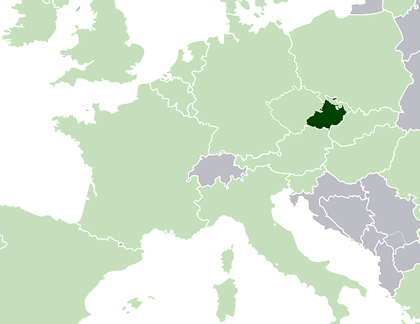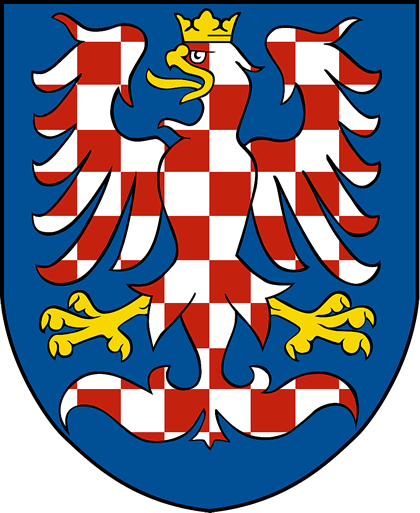World History
Moravia was an independent Slavic kingdom that ruled the middle Danube in the ninth century c.e.. Very few historical records exist to document its history, and the precise origin and territorial extent of the kingdom of Moravia are not known.
Byzantine emperor Constantine VII Porphyrogenitos in his political geography De administrando imperio (c. 950) identified the kingdom as consisting of the territories surrounding Morava, referring either to the Morava River in present-day Moravia or to a so-far unidentified city of Morava, perhaps near the Sava River in northern Serbia.
Slovak historians consider the kingdom of Great Moravia to have included lands along the Morava and Danube Rivers and stretching across modern-day Slovakia. Other historians have placed the center of the kingdom farther south, in Hungary and Croatia. The earliest known inhabitants of the region were Celts, who were joined and ultimately displaced by Slavs arriving sometime before the sixth century.
Historical sources mention the brief existence of an independent Slav kingdom along the Frankish border in central Europe in the second quarter of the seventh century. Following the defeat and destruction of the Avar empire by Charlemagne at the end of the eighth century two political centers emerged in the region, the principalities of Nitra and Morava.
In 828 Prince Pribrina of Nitra invited the archbishop of Salzburg to send missionaries to the principality and establish the first Christian church. Five years later Prince Mojmir I of Moravia defeated Pribrina and forced him into exile in the Frankish kingdom. Mojmir then united Nitra and Morava to form Great Moravia.
In 863 or 864 Mojmir’s successor Prince Rastislav asked the Byzantine emperor to send missionaries to Moravia. By turning to Byzantium for support, Rastislav hoped to strengthen his position and secure independence from the Frankish kingdom.
The emperor sent the brothers Cyril and Methodios, Byzantine church officials who were conversant in Slavic languages. To promote Christianity in Moravia, Cyril developed an alphabet for the Slavs and translated the Gospel into their language.
The written form he introduced, Old Church Slavonic, served as the basis for subsequent Slavic literary development. The Cyrillic alphabet he invented is used in many Slavic languages, including Russian, Bulgarian, and Serbian.
Between 871 and 894 Prince Svätopluk I led Great Moravia, successfully resisting Frankish attacks and defending Methodios’s missionizing efforts (Cyril died in 869) from interference by the archbishop of Salzburg.
In 880 Pope John VIII recognized Methodios as the head of an independent archbishopric in Great Moravia, appointed a bishop for Nitra, and sanctioned the use of Old Church Slavonic as a fourth liturgical language, alongside Latin, Greek, and Hebrew. Great Moravia reached its height at the end of Svätopluk’s reign, controlling Bohemia and parts of Hungary and southern Poland, as well as present-day Slovakia.
Following Svätopluk’s death, his sons Svätopluk II and Mojmir II fought each other for control of the kingdom. Their struggle weakened the state and left it vulnerable to the attacks of Magyar raiders entering the region from across the Carpathian Mountains.
Both princes were killed in battles with the Magyars sometime between 904 and 907. The defeat of the Bavarians by the Magyars near Bratislava in 907 marked the permanent settlment of Magyar tribes in the middle Danube and the clear end of Great Moravia as an independent force in the region.
- Bohemia
Bohemia Bohemia was a kingdom in central Europe, a vassal from the 10th century and later an electorate of the Holy Roman Empire. The earliest known historical inhabitants of the country were the Boii, a Celtic tribe, from whom Bohemia derives its name....
- Bulgar Invasions
Bulgar Invasions The earliest records of Bulgar invasions in Europe come from the fifth century. In 481 Emperor Zeno employed Bulgar mercenaries against the Ostrogoths who had invaded the Danubian provinces of the Eastern Roman Empire. During the reign...
- Ladislas - King Of Hungary
Ladislas - King of Hungary Ladislas was king of Hungary and the second ruler of the Ãrpád dynasty to achieve sainthood. At the end of the 10th century the Magyar leader Géza and his son Stephen began the conversion of the pagan Magyars to Christianity...
- Vladimir I (vladimir The Great)
Vladimir I (Vladimir the Great)Vladimir was a descendant of the ninth century Scandinavian chieftain Rurik, whose successors established control along the Dnieper and other river routes that connected Scandinavia to the Black Sea. Kiev became the political...
- History Of Bosnia And Herzegovina
History of Bosnia and Herzegovina. This site offers an overview to the history of the troubled European nation of Bosnia and Herzegovina. From the site: For the first centuries of the Christian era, Bosnia was part of the Roman Empire. After the...
World History
Moravia
 |
| Moravia in europe map |
Moravia was an independent Slavic kingdom that ruled the middle Danube in the ninth century c.e.. Very few historical records exist to document its history, and the precise origin and territorial extent of the kingdom of Moravia are not known.
Byzantine emperor Constantine VII Porphyrogenitos in his political geography De administrando imperio (c. 950) identified the kingdom as consisting of the territories surrounding Morava, referring either to the Morava River in present-day Moravia or to a so-far unidentified city of Morava, perhaps near the Sava River in northern Serbia.
Slovak historians consider the kingdom of Great Moravia to have included lands along the Morava and Danube Rivers and stretching across modern-day Slovakia. Other historians have placed the center of the kingdom farther south, in Hungary and Croatia. The earliest known inhabitants of the region were Celts, who were joined and ultimately displaced by Slavs arriving sometime before the sixth century.
  |   |
Historical sources mention the brief existence of an independent Slav kingdom along the Frankish border in central Europe in the second quarter of the seventh century. Following the defeat and destruction of the Avar empire by Charlemagne at the end of the eighth century two political centers emerged in the region, the principalities of Nitra and Morava.
In 828 Prince Pribrina of Nitra invited the archbishop of Salzburg to send missionaries to the principality and establish the first Christian church. Five years later Prince Mojmir I of Moravia defeated Pribrina and forced him into exile in the Frankish kingdom. Mojmir then united Nitra and Morava to form Great Moravia.
In 863 or 864 Mojmir’s successor Prince Rastislav asked the Byzantine emperor to send missionaries to Moravia. By turning to Byzantium for support, Rastislav hoped to strengthen his position and secure independence from the Frankish kingdom.
 |
| Moravia coat of arms |
The emperor sent the brothers Cyril and Methodios, Byzantine church officials who were conversant in Slavic languages. To promote Christianity in Moravia, Cyril developed an alphabet for the Slavs and translated the Gospel into their language.
The written form he introduced, Old Church Slavonic, served as the basis for subsequent Slavic literary development. The Cyrillic alphabet he invented is used in many Slavic languages, including Russian, Bulgarian, and Serbian.
Between 871 and 894 Prince Svätopluk I led Great Moravia, successfully resisting Frankish attacks and defending Methodios’s missionizing efforts (Cyril died in 869) from interference by the archbishop of Salzburg.
In 880 Pope John VIII recognized Methodios as the head of an independent archbishopric in Great Moravia, appointed a bishop for Nitra, and sanctioned the use of Old Church Slavonic as a fourth liturgical language, alongside Latin, Greek, and Hebrew. Great Moravia reached its height at the end of Svätopluk’s reign, controlling Bohemia and parts of Hungary and southern Poland, as well as present-day Slovakia.
Following Svätopluk’s death, his sons Svätopluk II and Mojmir II fought each other for control of the kingdom. Their struggle weakened the state and left it vulnerable to the attacks of Magyar raiders entering the region from across the Carpathian Mountains.
Both princes were killed in battles with the Magyars sometime between 904 and 907. The defeat of the Bavarians by the Magyars near Bratislava in 907 marked the permanent settlment of Magyar tribes in the middle Danube and the clear end of Great Moravia as an independent force in the region.
- Bohemia
Bohemia Bohemia was a kingdom in central Europe, a vassal from the 10th century and later an electorate of the Holy Roman Empire. The earliest known historical inhabitants of the country were the Boii, a Celtic tribe, from whom Bohemia derives its name....
- Bulgar Invasions
Bulgar Invasions The earliest records of Bulgar invasions in Europe come from the fifth century. In 481 Emperor Zeno employed Bulgar mercenaries against the Ostrogoths who had invaded the Danubian provinces of the Eastern Roman Empire. During the reign...
- Ladislas - King Of Hungary
Ladislas - King of Hungary Ladislas was king of Hungary and the second ruler of the Ãrpád dynasty to achieve sainthood. At the end of the 10th century the Magyar leader Géza and his son Stephen began the conversion of the pagan Magyars to Christianity...
- Vladimir I (vladimir The Great)
Vladimir I (Vladimir the Great)Vladimir was a descendant of the ninth century Scandinavian chieftain Rurik, whose successors established control along the Dnieper and other river routes that connected Scandinavia to the Black Sea. Kiev became the political...
- History Of Bosnia And Herzegovina
History of Bosnia and Herzegovina. This site offers an overview to the history of the troubled European nation of Bosnia and Herzegovina. From the site: For the first centuries of the Christian era, Bosnia was part of the Roman Empire. After the...
